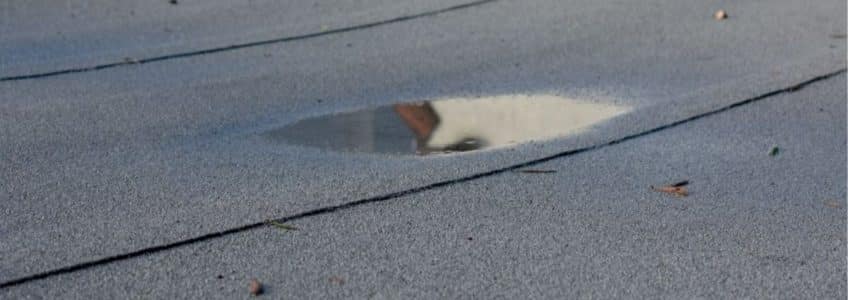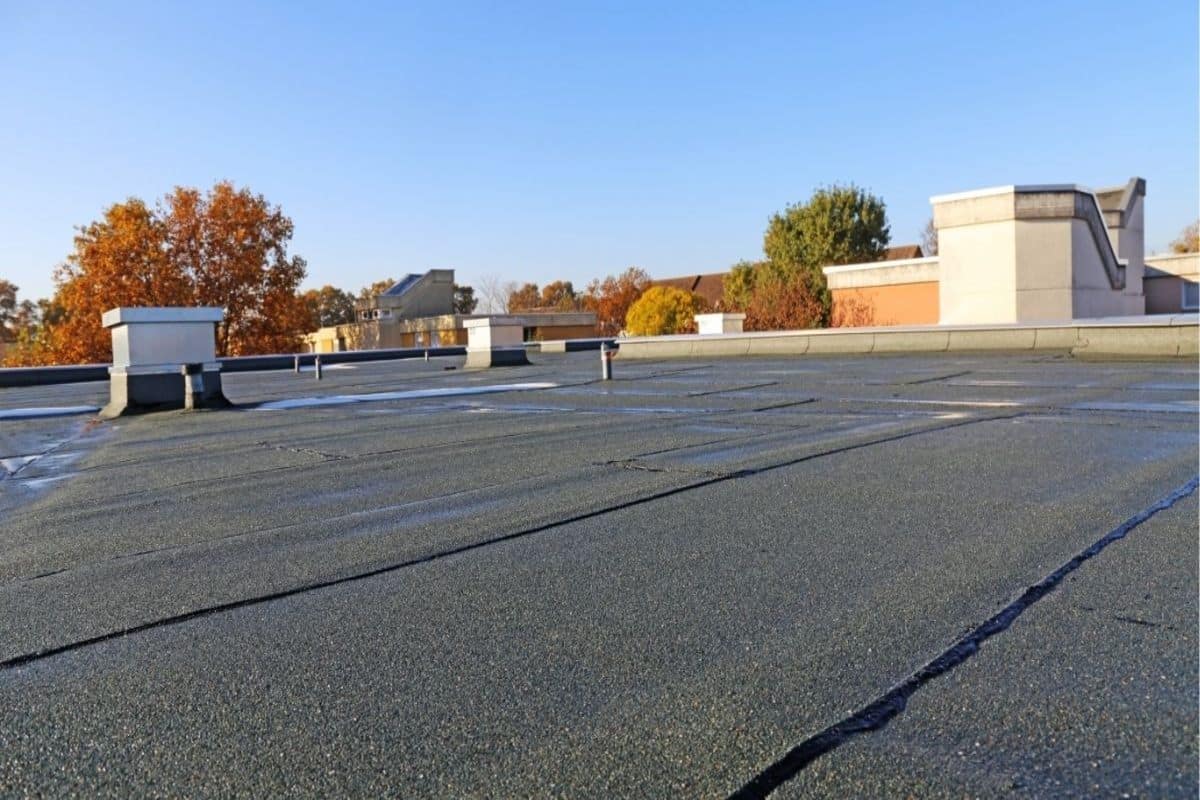
Water left sitting on a flat roof for more than 48 hours after a rainfall isn’t just an eyesore—it’s a warning sign. What may look like a harmless puddle is often the first step toward roof leaks, insulation damage, and even structural problems. If you manage or own a building with a flat roof, understanding why ponding water happens and how to stop it is essential. In this post, we’ll look at what causes ponding water on flat roofs, the problems it creates, and what you can do to fix and prevent it.
What Is Ponding Water and Why Is It a Problem?
Ponding water is water that remains on a flat or low-slope roof long after rainfall stops. Though the roof is designed with a slight slope for drainage, failure in the drainage system allows water to collect in low spots on the roof surface.
While small puddles might seem insignificant, the constant moisture from ponding water causes severe damage over time. It wears down roofing materials, increases the risk of leaks, and can even impact the underlying structure. Understanding these problems is crucial for knowing when to repair, patch, or replace your roof due to ponding-related deterioration.
Causes of Ponding Water On Flat Roofs
Poor Design or Installation
If a roof lacks proper slope or was poorly installed, water won’t flow toward the drains. This is one of the most common causes of standing water.
Blocked or Inadequate Drainage
Leaves, dirt, and debris can block roof drains and gutters. Blocking drainage can lead to water pooling even if the roof is correctly sloped.
Roof Sagging or Deflection
Over time, flat roofs may sag due to age, weight from HVAC systems, or water damage. These low points collect water and keep it from draining properly.
Damaged or Uneven Roofing Material
Membranes that are cracked, blistered, or poorly maintained can trap water. Uneven surfaces also prevent water from draining correctly.
Risks of Letting Water Stand
Ponding on a flat roof is more than just cosmetic; ignoring it introduces significant factors that can increase roofing costs over time. The risks include:
- Leaks and interior water damage
- Mold growth inside the building
- Added stress on the structure
- Shortened roof lifespan
- Higher cooling costs if the insulation gets wet
Ignoring these signs and allowing water to stand leads to costly repairs or early roof replacement, which are the direct outcomes of these accumulating issues.
Fixes for Flat Roof Water Issues
Improve the Roof’s Pitch
One long-term solution is to install tapered insulation under the roofing surface. This improves slope and helps direct water toward drains.
Add Drains or Scuppers
More drains or overflow scuppers can help move water off the roof faster. This is especially helpful for large roofs with minimal slope.
Apply Roof Coatings
Some modern coatings are made to resist standing water. While not a permanent fix, they can extend the roof’s life and protect against leaks.
Address Structural Issues
If ponding is due to sagging, you may need to repair or reinforce parts of the roof deck. This is a more involved solution, but it can restore proper drainage.
Preventing Ponding Water On Flat Roofs
Preventing ponding water on flat roofs is vital for their longevity and relies on consistent maintenance. While routine care goes a long way, ensuring your roof is designed correctly and addressed for underlying issues requires professional roofing installation and repair services.
Simple maintenance steps like clearing drains, checking for signs of sagging, and repairing minor issues early can prevent major problems. Trim back overhanging trees and regularly remove debris; even a few leaves can block drainage systems. Seasonal cleanups and using drain screens help keep everything flowing properly.
Final Thoughts

Ponding water on flat roofs indicates something isn’t working as it should. Left unaddressed, it can lead to leaks, mold, and expensive repairs. Whether it’s due to design flaws, clogged drains, or sagging materials, there are proven ways to fix and prevent it.
If your roof shows signs of standing water, contact Advantage Construction today. A professional assessment could save you thousands in future repairs and help protect the integrity of your building.
